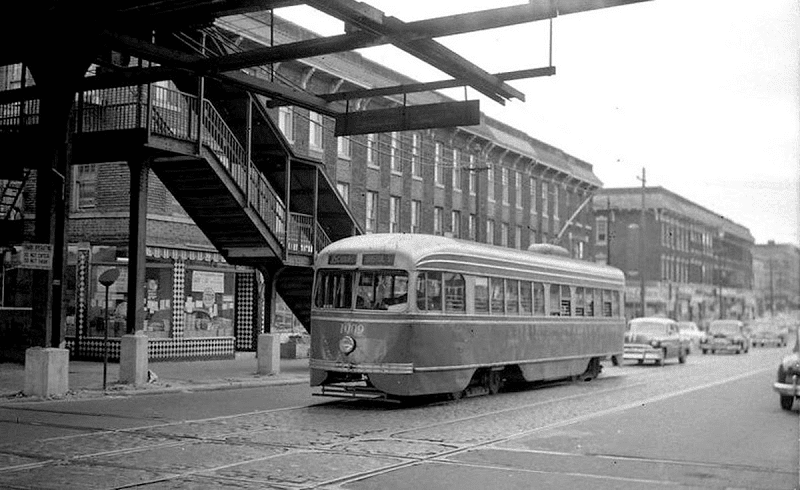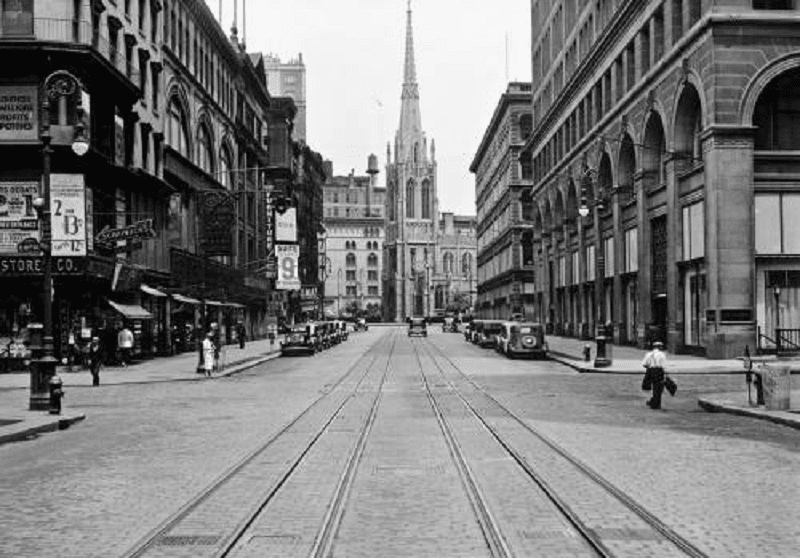The history of the first transportation in Manhattan began more than a hundred and twenty-five years ago, when the first tram lines were laid in the city. Tram traffic in Manhattan stopped on April 6, 1957 (namely, on Welfare Island or Roosevelt Island). But it all began 125 years ago, namely on November 14, 1832, when the world’s first tramway appeared throughout New York City (including lines that passed through the Manhattan area). Read more on manhattan-future.
What was one of the first means of transportation in Manhattan?
The trolleybus route was one of the first to appear in Manhattan, and for good reason: at that time, the trolleybus remained one of the most efficient means of transportation between the city’s districts. Of course, the effectiveness of trolleybus lines depends on the architectural development of the city, but despite this, this type of transportation continued to develop in Manhattan.
Trolleybus transportation has become an ideal replacement for horseback transportation, which was previously used by the townspeople. The electric means of transportation in the city became a more advanced option compared to the use of horses. Trolleybuses took over the streets of Manhattan. This mode of transportation dominated over others (including animal transportation) until the usual automobile transport, shuttle buses, bus routes and subways appeared in everyday life.
What kind of transportation did the townspeople use in the nineteenth century?
Over the years, Manhattanites have been looking for a convenient and fast way to get around the city. One of them remained dominant for a long period of time, adapting to the different dynamics of the city’s buildings and architectural development. This predominant mode of transportation was horse-drawn carriage. The first attempts to spread it in the city began in the 1820s. Later, it was replaced by other public transportation, which also changed quite a bit over time.

[Photo source: https://skyrisecities.com/]
Crowded subway cars (which appeared later, in the following centuries), heavy traffic on roads and new railroad transportation at the time all led to the city’s citizens looking for ideas for a new way to get around the city. Despite the opinions of skeptics who considered such attempts pointless, new modes of transportation appeared in Manhattan, which were able to simplify the city’s traffic junction.
The debut of the Manhattan horse-drawn omnibus in the 1820s
The first public transportation in the city appeared in the late 1820s, when the horse-drawn bus or, as it was previously called, the omnibus began to spread. It made its debut as a mass ground transportation that could be used to move around the city conveniently and quickly. A huge stagecoach pulled by horses traveled the streets of Manhattan, with a total capacity of up to several dozen people, and it moved along Broadway (from the area of modern Midtown in Manhattan to approx. the George Washington Bridge). If there was a need to stop the transport, the driver pulled a small leather strap, and the horses stopped.
Horse-drawn transportation in the city continued to exist, but the next evolutionary step in the development of Manhattan’s transportation was the construction of iron (steel) rails. This was the beginning of a new mode of transportation – the horse-drawn tram. The debut of this mode of transportation took place in 1832. Its route ran along Fourth Avenue and Bowery Street in Manhattan: the tram started from the Lower East Side and ended near Union Square.

[Photo source: https://skyrisecities.com/]
The laying of iron rails was the sole idea of one company called the New York and Harlem Railroad. Its ambitious goal was to connect Lower Manhattan with the suburb of Harlem, thereby uniting the iron and steel rails of NYC. Eventually, by the modern 20s of the XXI century, the plan was realized, and the system became complete.
Around the 1830s and 1840s, the first trip took place: a tram called the John Mason (named after the president of the Chemical Bank, who was one of the richest residents of NYC and also co-founded the city’s railroad company) moved through the streets of Manhattan. The transportation line in the city was quite modest, but also fundamentally innovative (literally, because the railroad lines themselves were buried in the ground). By the way, this tram service is considered to be the direct ancestor of the modern Metro-North rail transport system. According to statistics, the passenger traffic of this system is more than a million passengers a year. The main route is from Grand Central Terminal to the northern boroughs of Harlem and Manhattan, the Bronx, Connecticut and Westchester. The northern part of New York State is also a popular route.

[A map of Lower Manhattan showing the architecture of the city’s railroad line between NYC and Manhattan Island. The photo dates from 1847. Photo source: https://www.villagepreservation.org/]
The late nineteenth and early twentieth centuries for Manhattan’s transportation
Toward the end of the nineteenth century, several important historical events occurred that affected the city’s transportation infrastructure. For example, in 1872, there was an outbreak of equine influenza, and the authorities were concerned about the health of the horses used to move around Manhattan. Prior to these circumstances, it was also known that horse-drawn carriages were slow compared to other innovations and new technologies (electric trams, trolleybuses, etc.).
Given the circumstances of the time period, other means of transportation in the city were only improving compared to horse-drawn transport. The predominance of cars, buses and subways on the streets of Manhattan eventually pushed horseback travel from the platform of transportation options.

[The trolley line and subway surface line that runs through Cooper Square (downtown Manhattan), the photo dates from 1901. Photo source: https://www.villagepreservation.org/]
In 1883, the first steam-powered cable car was built in Manhattan and operated for two decades until 1909. At the beginning of the twentieth century, electric trolleys were being actively installed in the city, so there was no need to extend the cable car’s operation.
During the early twentieth century, the electric tram proved to be effective: compared to other modes of transportation, it could easily compete in the market due to low electricity costs. But eventually the automobile industry came along and quickly took over the streets of Manhattan. From the 1920s to the 1950s, automobile concerns bought tram systems, working on a development in which the bogies were replaced with rubber tires.
However, it was not possible to completely bury the trolleybus lines in Manhattan. Even today, trolleybuses continue to move through the city streets. The transportation industry is still working to improve their component, urban design and overall planning.

[The photo shows Broadway Street with a tram line running along it. The photo is dated June 13, 1937. Photo source: https://www.villagepreservation.org/]
Work on improving trolleybuses continues!
Work continues on a new phase of trolleybus improvements – for example, former Mayor Bill De Blasio is the initiator of a $2.5 billion project (Brooklyn and Queens trolley lines), which, in particular, run near Manhattan. Some suggest restoring the tram lines along the “river to river” route (such a line used to exist, it ran along 8th Street in Manhattan).